|
|
by Rick Baker
On Aug 8, 2013
Thought Tweet #799 Suggestions for Leaders: How to make sure your confidence does not threaten your followers.
The Thinking Behind The Tweet
Some followers are intimidated by Leader's self-confidence. Here are some Spirited suggestions, to make sure you do not come across that way:
- Be authentic…it is OK to be on the reserved side of centre if that is your character…it is OK to be on the boisterous side if that is your character
- Be committed to working on self-improvement…i.e., raising his or her own self-confidence when that is required, as it will be from time to time
- Focus on strengths: personal strengths and the strengths possessed by others
- As Dale Carnegie taught, Praise heartily
- Make full and appropriate use of humour…some leaders have just a little of it and will need to remind themselves of the importance of putting it to good use…other leaders have heavy doses of it and they will need to remind themselves to never let it go too far…self-humour is best…humour at the expense of others is an absolute no-no
- Listen…resurrect that art if it has become lost
- Master your emotions…and keep them under control [most of the time]
- Live with Integrity…as defined here
by Rick Baker
On Aug 7, 2013
Thought Tweet #798 When you chose to be a Leader you accepted the responsibility to Help People & Manage the Situations faced by People.
The Thinking Behind The Tweet
To accomplish these two additional responsibilities you will need to:
- Understand yourself
- Develop your strengths
- Maximize your personality
- Understand others…a life-long education and
- Communicate well
by Rick Baker
On Jun 28, 2013
A few months ago, I wrote an article 'A Different Way to Look at DISC personalities'.
That article was first written about 7 years ago. The original title was 'Slipping a DISC'. However, I chose to soften the title and massage some of the words. In hindsight, I am not sure why I softened the words or the title. I erred. This article contains an effort to fix my error and remove any confusion around my views of personality assessments.
I avoid the use of personality assessments such as DISC, Myers Briggs, etc. because I have found them constrained by the viewpoint ‘personality is set and cannot be changed’. I disagree with that fully. I recognize personality rarely changes. On the other hand, I believe personality is a matter of choice.
The problem is, people rarely choose to adjust and improve their personality.
With leaders in mind...
I embrace the 1912 wisdom of Charles F. Haanel,
“Your personality is made up of countless individual characteristics, peculiarities, habits and traits of character; these are the result of your former method of thinking, but they have nothing to do with the real “I”.”
With Canadian leaders in mind...
I embrace the 2012 wisdom of Joe MacInnis,
"All the leaders I've met, worked with, and read about have had one thing in common. Along the way to becoming practitioners and masters of leadership, they transformed their character."
Combining these pieces of wisdom, I believe the most successful leaders are the ones who have, with much effort, changed their personalities. And, that's what we should focus on in Canada. We should help our leaders make adjustments to their personalities so they have a better chance of accomplishing their desires and goals.
I avoid personality assessments like DISC [which parodied] because they:
- address symptoms of inflexible behaviour rather than the cause of it [which I will call Stagnant Personality Disorder]
- they miss the mark of taking talent to task
- they stereotype people too narrowly [people are multi-dimensional]
- they don’t go far enough celebrating and using innate talents
- they promote mediocrity and creation of artificial middle-ground over celebration of highly-valuable, natural-differences
And worst of all, they make learning and self-development boring, not interesting, and not fun.
I know these views are strong and non-standard. I have reached them because I have seen too many DISC and other personality assessments sitting forgotten and unused on their owners’ shelves. [including my own shelf]
Conversely, I have seen talents assessments, aimed at helping people develop performance strength, provide enjoyable self-development experiences and very positive results.
by Rick Baker
On May 10, 2013
Edward de Bono is one of my heroes. In my opinion, he is the world's greatest creative thinking educator.
I have written about Edward de Bono and his 'Six Thinking Hats'...'Six Thinking Hats' is an extremely helpful tool for sorting out your thinking and for communicating with others about thinking.
Here's a picture-summary:
Edward de Bono's 'Six Thinking Hats'

I have a de Bono section in my library. My goal is to collect and red all his books. That's a challenge because he has been prolific, writing well over 50 books. I have just completed reading de Bono's 'Six Action Shoes', (1991). 'Six Action Shoes' is an extremely helpful tool for sorting out your actions and for communicating with others about actions.
Here's a picture-summary:
Edward de Bono's 'Six Action Shoes'
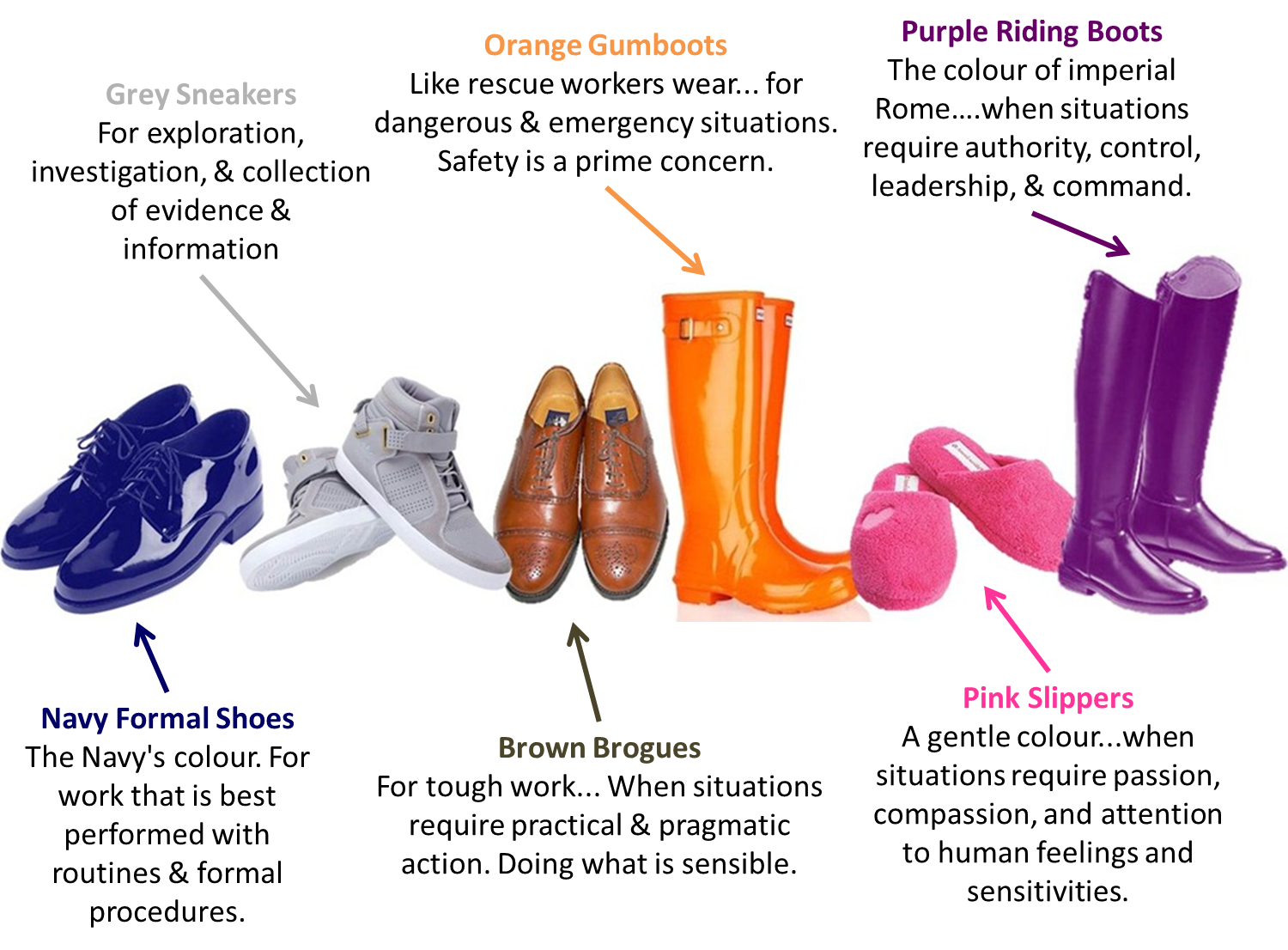
These thinking and action tools provide excellent ways to Seek Simple....a Spirited Leaders' philosophy. When thinking can be summarized in 6 ways...that's seeking simple. When action can be summarized in 6 ways...that's seeking simple. And, that's why Edward de Bono is so amazing. He has been able to unleash his genius [and help others do the same] because he is the master in simplifying before choosing how to think, simplifying before choosing how to act, and knowing when and how to be creative. In other books, he illustrates exactly how to be creative. [Our recent thought post 'Taking Curiosity to Creativity' contains de Bono's signature contribution - lateral thinking.]
Now, Seek Simple is one of Spirited Leaders' core philosophies...another is:
Business Contains Only 3 Things: People, Process, & Situations
Much has been posted about People, Process, & Situations.
Now we will show how Edward de Bono's Six Thinking Hats and Six Action Shoes can be incorporated.
Business Contains Only 3 Things: People, Process, & Situations.
Here's the picture...
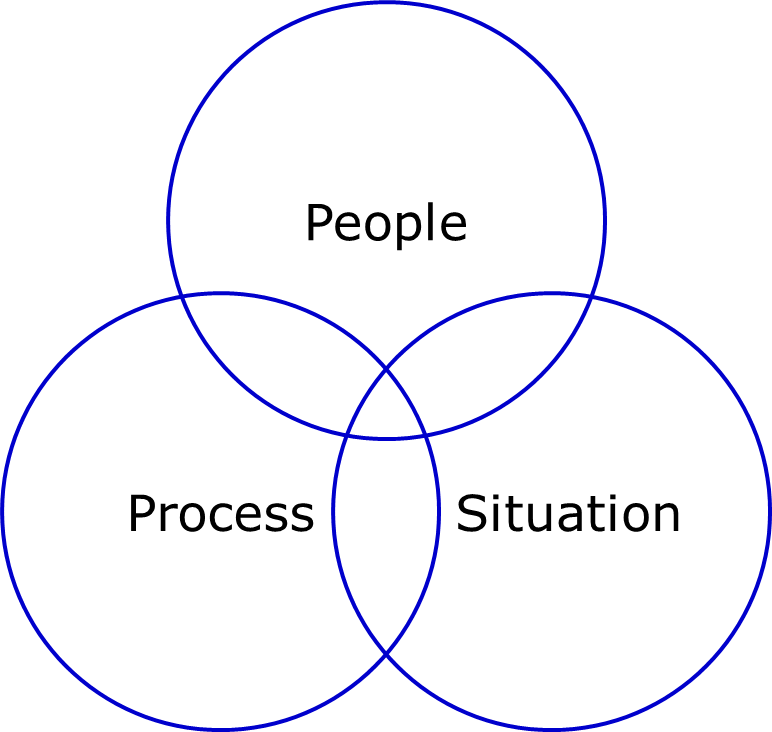
A snapshot in time during your business day - that's what we mean by Situations. That snapshot will contain people [at least 1, you] and it will contain process [at least 1, your thinking]. Process either involves People or machines/mechanisms/tools [designed by People]. For the time being, let's concentrate on the Processes performed by People. There are only 2 types of Processes performed by People: Thinking and Action. If we embrace de Bono's tools, the Processes performed by People have 12 components: 6 ways of thinking and 6 ways of taking action.
In any Situation, People can decide which of the 12 things they will perform.
Here's the picture...
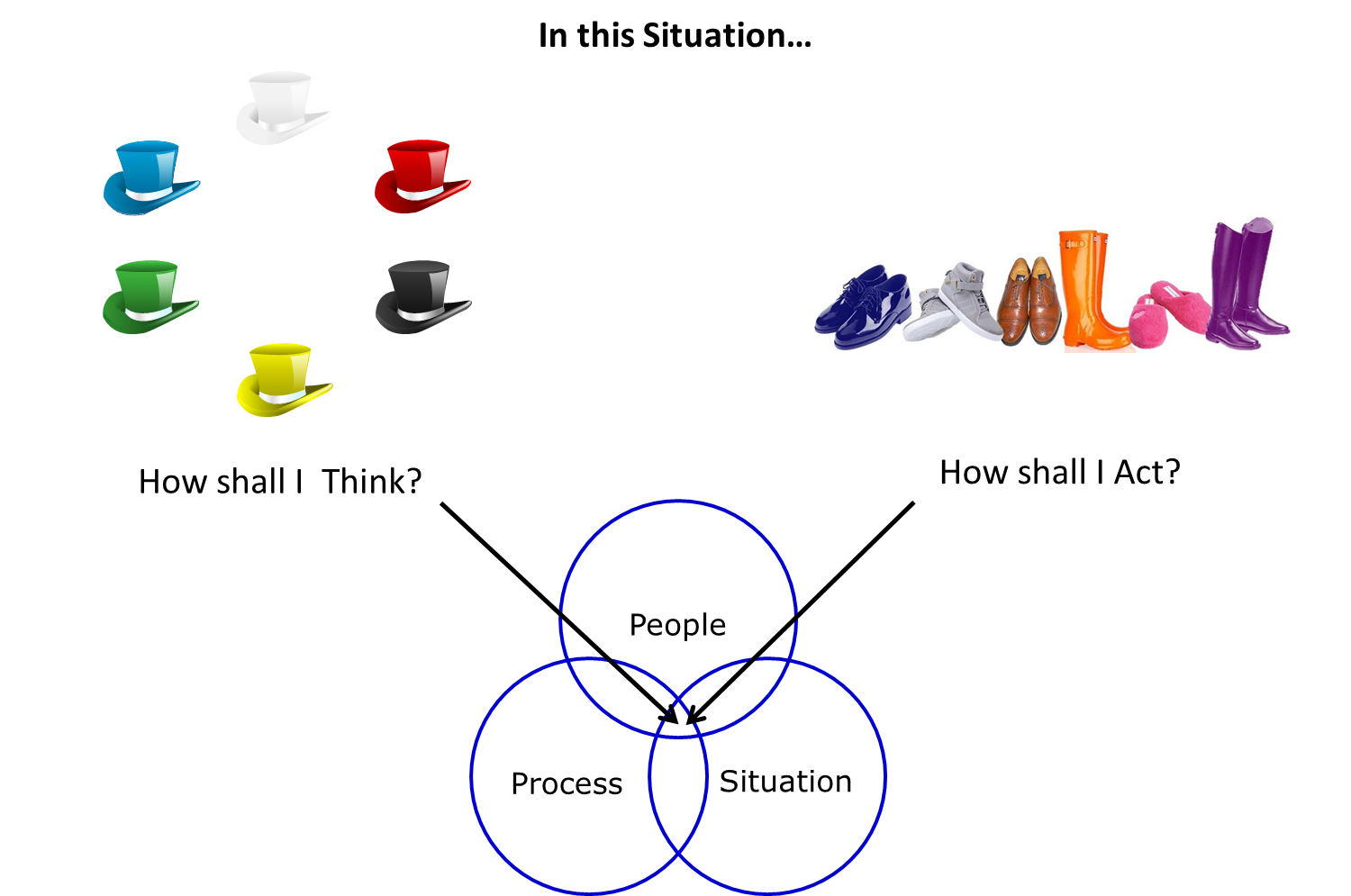
Those are good questions to ask!
[That's Seeking Simple and finding it.]
[That makes for one very Good Habit.]
by Rick Baker
On Apr 18, 2013
Slipping a D.I.S.C. and Getting Into Personality Style
[an excerpt from 'The Dark Side of Sales']
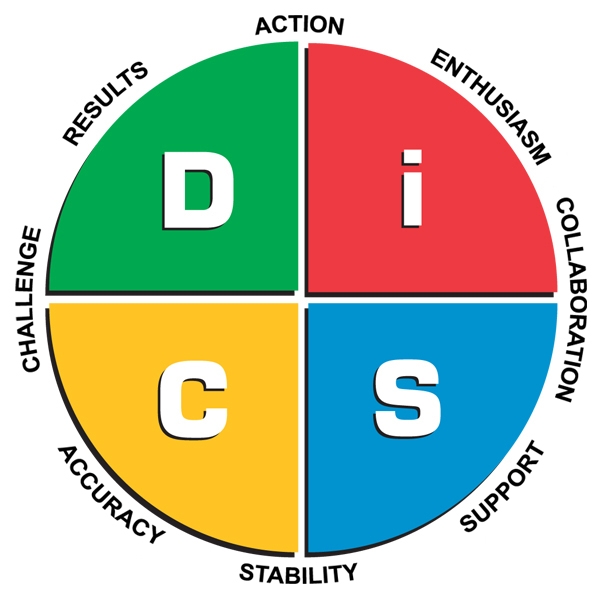
When one considers people one must do a little work. One must first understand people exhibit diverse personality styles.
There are many different ‘models’ and ‘tools’ designed and purported to help us sort out the various personality styles.
Let’s start with D.I.S.C. approach
D Dominance-Types
I Influence-Types
S Steadiness-Types (formerly called Security)
C Compliance-Types (formerly called Consultative...sometimes called Conscientiousness)
Obviously, or at least it is obvious to the people who learn this ‘theory’ and think at the same time…it is impossible to peg people into little 2-dimensional pieces of pie chart. People are a little more complicated than that…at least, they are 3-dimensional [trusting Descartes and many others had that right].
Whatever - 2-dimensions, 3-dimensions, or more - I think this D.I.S.C. thing has some real merits. At least, it is a starting point. There are many similar/comparable types of personality-style tools. Again, I admit I am just a student-apprentice when it comes to this sort of psychology…or is it philosophy? But, I think the D.I.S.C. and other such tools/theory about human personality styles is at least directionally-correct…and it can be used as a helpful little tool to help you span the big gaps between You and Them.
Please take the following interpretation in stride…check out D.I.S.C. and other such theory/ideas/tools and draw your own conclusions.
Here is a hint of the valuable things I have learned around D.I.S.C.
D: D’s are dominant, pragmatic, let’s-act people who feel anger before anything else. If you are a D you might say - Now, I know why I find everyone so bloody irritating. It is my ‘nature’ so now I have not only a justification for my anger, I also can use anger - it’s my nature as an excuse any time I want.
I: I’s are gregarious, will-act people who like people a lot more than facts. They are able to lead. These sorts are often able to get along on sheer personality. (This is how I first caught on I might not be an ‘I’.)
S: S’s are outgoing too. They like to be led, and be part of a team. These S-folks like details. They can delve into details until the cows come home….especially, if they can do it as part of a committee.
C: C’s don’t just like details…they love them. They are details-insatiable. They wish everyone could be a number. And, they make everyone give numbers…like Johnny 5, they need input.
Here’s a pretty good sample of my D.I.S.C. mind pictures.
- It is hard for D's to sell to S's. This is like a 100 metre sprinter trying to adjust to compete in a synchronized swimming event. But, chameleon D, master sales people can do it.
- It is hard for I's to sell to C's. This is like a relay-racer trying to adjust to retiring as the person who is forced to measure how far other athletes long jump. But, chameleon I, master sales people can do it.
- D's can sell to D's. They can lose today’s 100 metre race and quickly forget it, and start training for the next racing meet...knowing they will win next time. ...no matter what it takes.
- D's can sell to I's. Both know how to sprint...while the one hates all that teamwork and passing of batons and the other would rather be on the podium with friends than take the gold medal alone....there is a strong mutual respect – both know how to get things done and win.
- I's can sell to I's. The relay team gets along real well...especially when they win. And, they don't have to win every time to be very, very happy. But, they always have to have done their best...and they have to have some laughs and poke fun at each other at least once and a while.
- I's can sell to D's. Again, there is the shared mutual respect between these sprinters...even though neither one sees the other's race as his preferred choice.
- And S's and C's cannot sell or understand anything I have written in this book. I mean they wouldn't ‘get’ any of ‘it’. This could be written in a different language and it would not distress an S or a C in the slightest…they wouldn’t even notice.
- S’s and C’s would rather get some repeat root canal work than read a book on sales. [except, an S might pretend to be reading it if he/she thinks the boss is looking] Furthermore, even if they were really, really trying it would be almost impossible for an S or a C to have read all the way to this point. I mean, that’s quite a few pages for an S to read. And, a C couldn’t handle the lack of numbers and math. These S and C types don’t like writing or reading other people’s words. S's like written stuff to a degree but they prefer much more fuzzy communication and the joy of the interpersonal experience. C's like a big fat meal of numbers, hold the people, and go light on the written words.
- Not one natural S or natural C has ever simply morphed into a master sales person...this has only happened on rare occasions when the natural S or natural C first altered, in a most-radical way, his/her character. And, you gotta believe any sort of radical character reconstruction is very rare, indeed. And, a radical character reconstruction is even rarer when the person is an S or a C. So, again, S’s and C’s don’t get any of this. And S's and C's cannot sell.
- S's lack the commitment to see most things through from start to finish - so, something like a radical character reformation is particularly tough for them. When you think of an S, think of: ready, ready, where were we?…no aiming, no firing. If given the choice between playing a game of pickup ball hockey in the laneway or doing business commerce - an S will always say “Game on, let's play ball.”
- If a C is given the choice between climbing up into their next-door-neighbour’s attic to weed through 5 banker’s boxes, full of 5-year-old receipts, and income tax stuff or thinking about their character - the C will always say “Has anyone seen my back-up calculator and that pack of fresh batteries?”
Here are some other helpful D.I.S.C. tidbits:
- When a buyer says “I know what you do. Been there, done that”....chances are extremely good the person is either a D or a C
- Anyone who fesses up to being an accountant is likely a C or an S. However, if someone pretends to be an accountant then that person might be an I, a chameleon I, that is. [but not a D because any D, even a chameleon D, would get way too angry if asked to play an accounting role]
- Most engineers - although my scientific performance will confirm, not all - are C’s
- The I-type person wouldn't touch an audit with a 10-foot pole. For an I, working on an audit and actually bragging about it to complete strangers would be like standing naked at the side of the road, in a cold-rain shower, screaming at all the passing cars...“Look at me.” An I or an S would do that sort of thing only if he had a bunch of buddies with him and was at least half-way through his 18th beer
- Also, like the S, the I typically cannot remember even ball-park details like "I think it was about $200"
- On the other hand a C will never say “I think it was about $200.” The C will say – “It was $204.57.”
- And, the D will say “It was $205, and do not make me have to repeat myself.”
Footnote:
Chameleon: from the Greek words "chamai" (on the earth) and "leon" (lion), this is the name of a special creature that can change its colour to blend in with surroundings. This creature can also move with stealth and move its eyes independently. A Sales person who can perform his or her role like the chameleon will be “grounded” and “courageous”. Also, the Sales person will have ego and countenance under control, won’t command attraction, and will be extra observant. While we cannot change a tiger’s stripes, we can change the colour of an earth-lion. We simply must decide that is the role we want to play – the role of the Sales chameleon.
by Rick Baker
On Dec 13, 2012
People have been trying to figure out other people for a long, long time.
People-patterns have existed for millennia.
For example, consider archetypes.
An archetype is a broadly accepted description of a pattern of human behaviour.
Below are examples of archetypes obtained through a simple internet search.
Interesting to note the similarities and also the grouping nuances & differences.
The question: Do archetypes and related pattern-tools such as personas actually help marketing efforts?
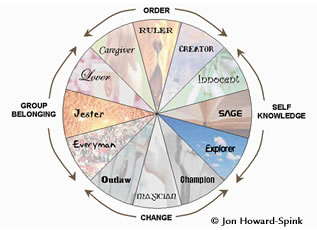
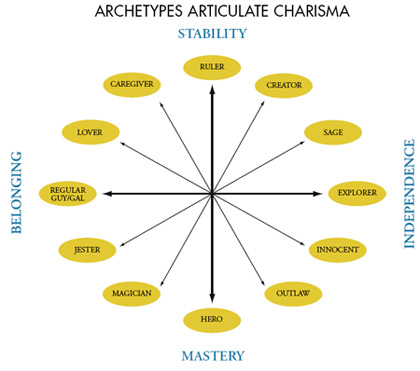
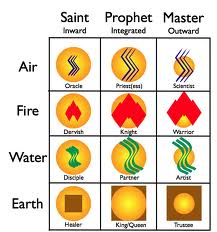

|
|